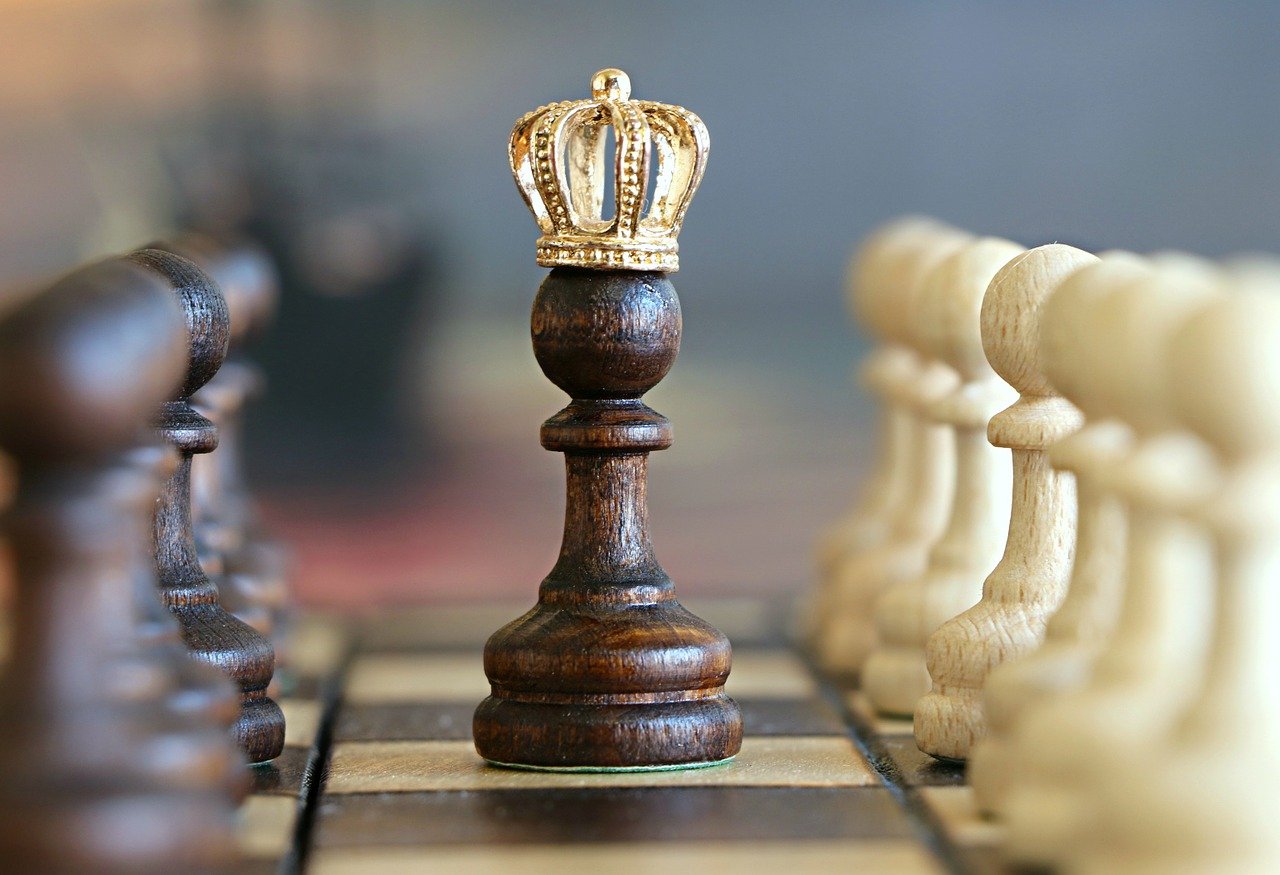Chess is the quintessential strategy game taught in the West. Virtually any English speaker can play chess, or at least knows the basics of the game. Supposedly, 70% of adults per a YouGov poll in various Western countries have played chess at some point. But, what if you want the chess experience but don’t want to play international chess?
Chess is largely viewed as a strategic or tactical game since it eliminates elements of chance. It is a fascinating game from a mathematical and theoretical perspective. Orthodox chess isn’t quite a solved game, but a computer can consistently attain a huge Elo level that annihilates most players. Computers still act different from humans, but that doesn’t make them any less threatening.
There are forms of chess which use the commonly accepted standard chessboard, and there are games which use a variation. Each of these games is different in its own way. The same basic game of Chaturanga became orthodox chess which is known internationally, and the 7 different games around the world covered in this article. There are more, but these are games which are played today that I could find good information on.
Some of these pieces have moved back into chess as fairy chess pieces, while others have become obsolete. There are at least 7 separate variants of chess played around the world which evolved before modern times. Modern chess has its own variants, but they’re the topic for a different article.
Why I Wrote This
I won’t dive into this too much before the main event, but I will hit the parts which do affect how I compiled the list. There are obviously far more than 7 variants of chess which have been played historically. I wanted a strategy game like chess that wasn’t standard chess, which meant something that has lasted to the present day.
I’m not a huge fan of orthodox chess, not due to the game itself, but the culture of it where I grew up. The local school district’s chess clubs were downright toxic. If I was going to play a game, I wanted to play something related but not the same.
I also love learning more about the world and wanted a game didn’t just have a history, but also quality resources about it. I lived in China when I was younger, so I took a bit more to Xiangqi and similar games which evolved in East Asia. That being said, I also looked for games which were still commonly played. Let’s dive in.
Shatranj
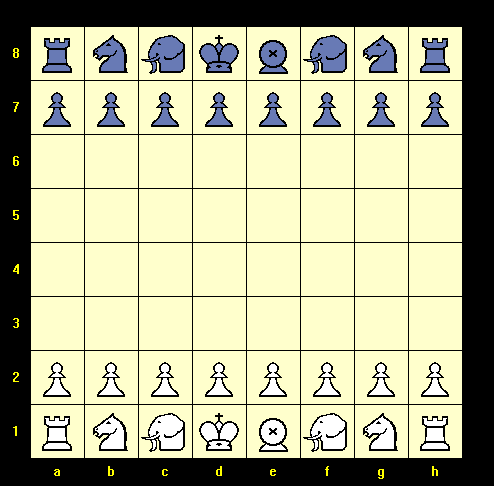
When I played chess when I was younger, I had heard that the queen originally moved a bit differently and at one point only moved like the king. Turns out with Shatranj, the queen equivalent, the ferz moves more like an unbounded advisor from Xiangqi (a single diagonal square advancing or retreating). The equivalent of the bishop, the elephant, moves 2 squares in a diagonal, skipping anything in between. There are some cosmetic changes to the board and some other rule differences.
I couldn’t find much in English about how active the game is outside of a few tournaments. You can find more rules here if you want to try the game out. The history of the game is fascinating though.
Shatranj is considered a descendant of Chaturanga, a much older game. Most chess variants are believed to ultimately come from Chaturanga. This form of chess bore many separate games and rule sets (such as Tamerlane chess), but Shatranj is the most well-known. I didn’t really realize just how complex the history or development of chess was until I learned about this game.
Xiangqi
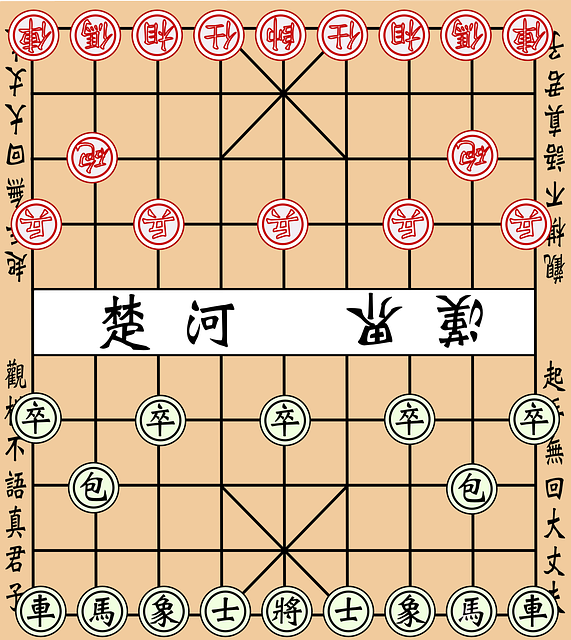
Xiangqi is known as Chinese chess. This game is substantially different than orthodox chess, but retains the general feel of the game despite different play. The rules are different, as are the strategies, but it still feels spiritually the same as standard chess.
This game is one of the most well know chess variants and also manages to be one of the more different ones. The equivalent of the king is the general (or the marshal depending on which color you start with) which is stuck in a 3×3 “palace”. There are two equivalents to the ferz from Shartranj which are also limited to this palace.
Very few of the pieces resemble standard chess pieces (aesthetically or in terms of movements), but the game feels largely the same in spirit. Different aspects are highlighted differently, and the pieces and even board all work differently, but it still feels like chess. Certain pieces are limited to certain parts of the board, and others are empowered by advancing further.
Most pieces cannot jump over other pieces unlike the knight in orthodox chess. Some pieces require an intervening piece in order to capture (the cannon). The rook is one of the strongest pieces, and the horse (closest to the knight) is nowhere near it in value or efficacy.
The rules are also a lot different. Perpetual checks are not allowed. Generals also cannot face each other along the same file without an intervening piece. It really is a completely different game while retaining the exact spirit of chess. There are also multiple derivative games created from the base of Xiangqi.
Janggi
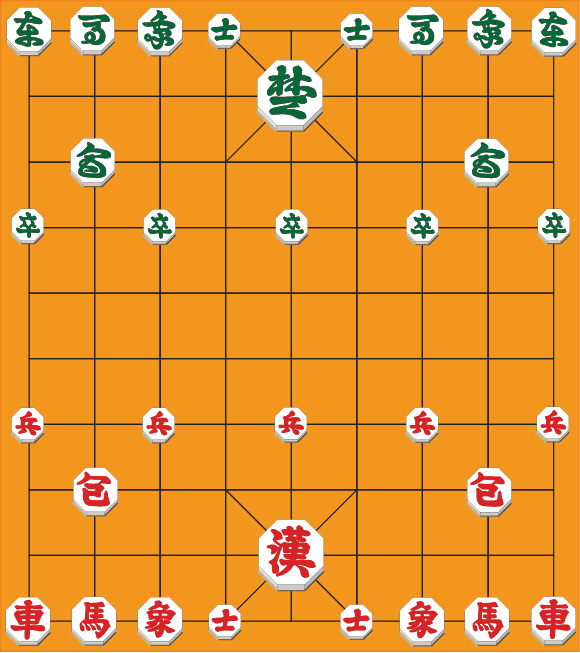
Janggi is Korea’s version of Xiangqi. While it is largely the same in the underlying play, there are also substantial differences. The layout and organization of the board is also slightly different, as are the points per piece.
There isn’t a river in Janggi to start with. The king equivalent, or general, starts in a different location. Instead of advisors, we get queens or counselors which move one space in any direction within the “palace”. The elephant has a completely different move than in Xiangqi. Even the cannon has subtle differences. To make it all more complicated, this game allows the exchange of elephants and horses in the setup phase.
This game is basically Xiangqi with different rules and a different layout analogous to some of the more common orthodox chess variants. It also adds a rule to allow a player to pass a move and choose to not make a move preventing forced moves.
While it isn’t as accessible as Xiangqi to English speakers, there are still enough materials to get going. A Xiangqi board could even be modified with minimal effort to accommodate Janggi. I don’t know how popular it is overall, but I could find active English and Mandarin language communities.
Shogi
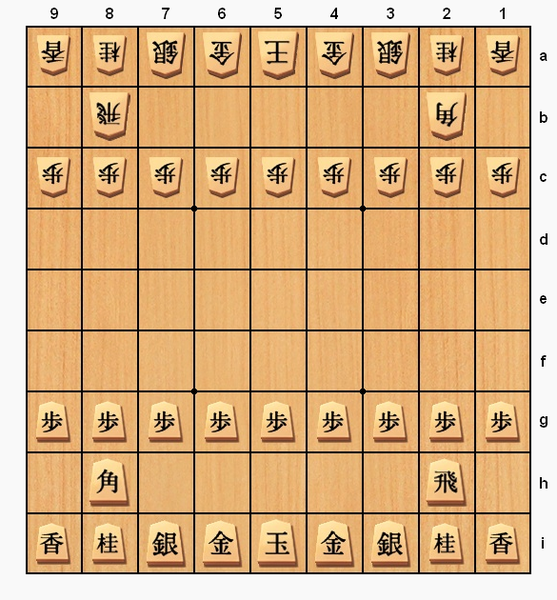
Shogi is a game from Japan which grew differently than Xiangqi (or Janggi). The game evolved much differently from its common ancestor than other East Asian derivatives of Chaturanga. It also has multiple pieces not found in orthodox chess and a whole different play style and rule set.
Shogi features promotions and drops as well as different pieces. If a certain piece reaches a specific point, it gets promoted in a way which makes it more or less powerful depending on the specific piece and the length of the game. Some promotions are highly favorable, others can make a piece more flexible but limit its usefulness. There are a few promotions which grant the piece substantial upgrades.
The game also features the ability to “drop” pieces, which brings them back into play. As you capture pieces, you effectively gain more soldiers to battle with. This is an extremely old rule in Shogi which makes it the first chess variant to include recycling enemy pieces.
The minor variations in the game’s rules make it even more complicated. Shogi is similar to several chess variants with certain things, but is completely alien in other aspects. It’s a fascinating game which is actually pretty easy to find a community for as well. Shogi is relatively popular as an alternative chess type strategy game. It is one of the few variants I was actually aware of before this article.
Shogi Variants
Shogi is also well known because of its many variants. It doesn’t quite have as many variants as orthodox chess, but it isn’t limited to the same base game with minor rule differences like other variants. There are recordings of many Shogi variants from history as well which shows the evolution the game went through.
While other chess variants have changed substantially, most of them haven’t changed at quite the same rate as Shogi or orthodox chess. And while many of these variants have been lost to the ravages of time, it’s still interesting to see how many different types of boards and rule sets have even fleeting fragments left behind.
It’s hard to find interest in chess variants which don’t use a standard board without a lot of work and effort. Shogi feels much different with many live variants with reduced complexity to teach the game to complete different styles to massive boards.
While some of these have faded from popularity, many other variants are still common. The most interesting thing to me is that so many of these derivative games are so different but still garner interest. Not all of them are popular or even still played, but there are some extremely different versions actively played with communities behind them.
Shatar

Shatar is Mongolia’s version of chess, believe to originate from around the 13th century. The game is derived from some form of Shatranj which evolved in its own way in Mongolia. It feels like an intermediary stage of chess between Shatranj and orthodox chess with its own unique aspects.
The king is the same as chess, as are the rook, bishop, and knight equivalents. The pawn is more like the older version of the pawn with its movement (with some early game differences). The queen is like a mix of the rook and the ferz, able to move diagonally one space, or orthogonally like the rook for as many spaces as desired.
While this game isn’t as popular as the previous games listed, it still has some relatively active communities. The rules I could find also varied to a degree with different idiosyncrasies between each version. That being said, there are multiple online versions of this game which are playable. This game can be played with a standard chess set easily enough.
Sittuyin
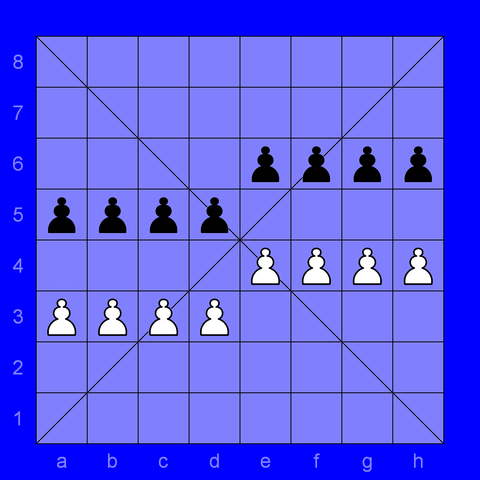
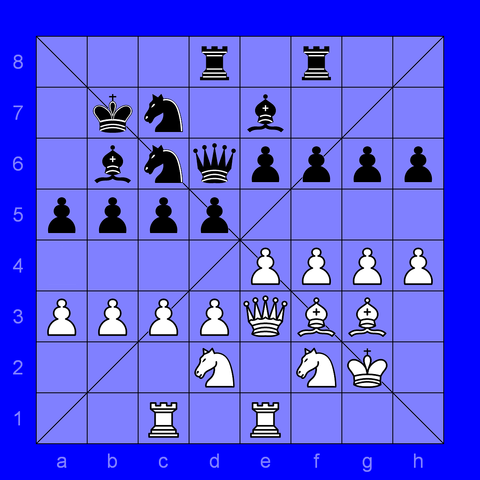
Sittuyin is a form of chess played in Myanmar, also known as Burmese chess. This game is different than other forms of chess for several major reasons. One of the biggest differences is the board, the other is the placement. Most pieces move more in line with older forms of chess as well.
The board is laid out in a way to encourage quicker melee. Pawns are closer together and there is a different ordering of the rows which splits the board. They move like pawns in orthodox chess (though there is no option to jump 2 spaces for a pawn). Two pawns (one on each side) are within instant capturing distance from the initial setup.
The major difference that sticks out compared to other versions of chess is the strategy in piece placement. Aside from the pawns (or “feudal lords”), the players are expected to place their pieces one after the other which introduces strategies in deployment. Many pieces above the pawn equivalent are weaker (aside from the knight and rook), but the placement can impact strategy substantially. The game looks absolutely fascinating and the strategic placement element complicates it significantly. This game can also be played with a standard chess set.
Makruk
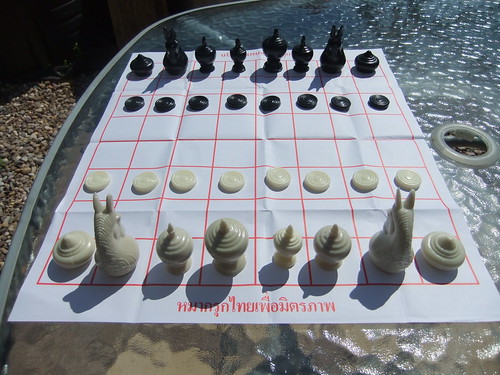
Makruk is Thailand and Cambodia’s version (known as Ouk Chatrang, which has slightly different rules) of chess. It is very similar to Sittuyin for moves, but is more in line with Shatranj for layout (though notably different too). The game features promotions and a different move set than orthodox chess among other definitive differences.
The board is laid out differently with the pawns a row ahead of where they are in orthodox chess. Pawns promote into the Makruk equivalent of the ferz upon reaching the sixth rank. The king, knight, and rook equivalents are the same, but the bishop equivalent is more like the silver general from Shogi, able to advance one square or move diagonally one square. The queen equivalent is replaced with what is basically the ferz.
Pawns are similar to their equivalent in Sittuyin in that they advance straight forward but can capture diagonally. Pawns can also be promoted like in Shogi which turns them into ferz level pieces able to move diagonally. There also isn’t an en passant type rule (which speeds up orthodox chess) due to the placement and movement of the pawn itself.
There are other special rules such as counts depending on what pieces are left in play which determines how to make the game an official draw. The rook is very much considered the strongest piece in this game since 2 rooks sets the count to 8 moves to a draw, while no rooks and 2 bishops jumps the count to 22. It just gets higher with other pieces.
Conclusion
Seeing the different way these games evolved from the same common ancestor also gives insight into when the game was adopted and what local changes happened. Shogi is probably the most different game from standard chess in terms of rule differences, but each other game incorporates its own substantial changes which makes for a unique experience. Xiangqi is cut from the same cloth as orthodox chess, but it has a completely different dynamic. Each game has its own appeal and difference in play style.
Some variants can be over quickly while others drag on for ages. Some have stringent rules which can impact a possible solution to a problem while others have different set ups or minor advantages. The basic rules of chess will make the basic game rules easy, but do very little to explain the metagame or strategy of the variant.
Give one of these games a run and see if they don’t help you with strategy. They’re all ultimately derived from Chaturanga (or another derivative of it), but some are so different they barely feel like the same game. Shatranj and Shatar show their chess heritage clearly, but Xiangqi and Janggi tend to be more similar in spirit rather than form. Shogi has many variants, but none of them really feel like modern chess. Makruk and Sittuyin show their heritage but have major differences as well.
I’ve been curious about alternatives to chess which don’t sacrifice the strategy and enjoyment of chess. These games are all at least somewhat active and are interesting alternatives to orthodox chess. While you may enjoy standard chess, sometimes playing a different game can help you think outside the box by adapting strategy to a new rule set. It can also be a change of pace or just something different to try out.
